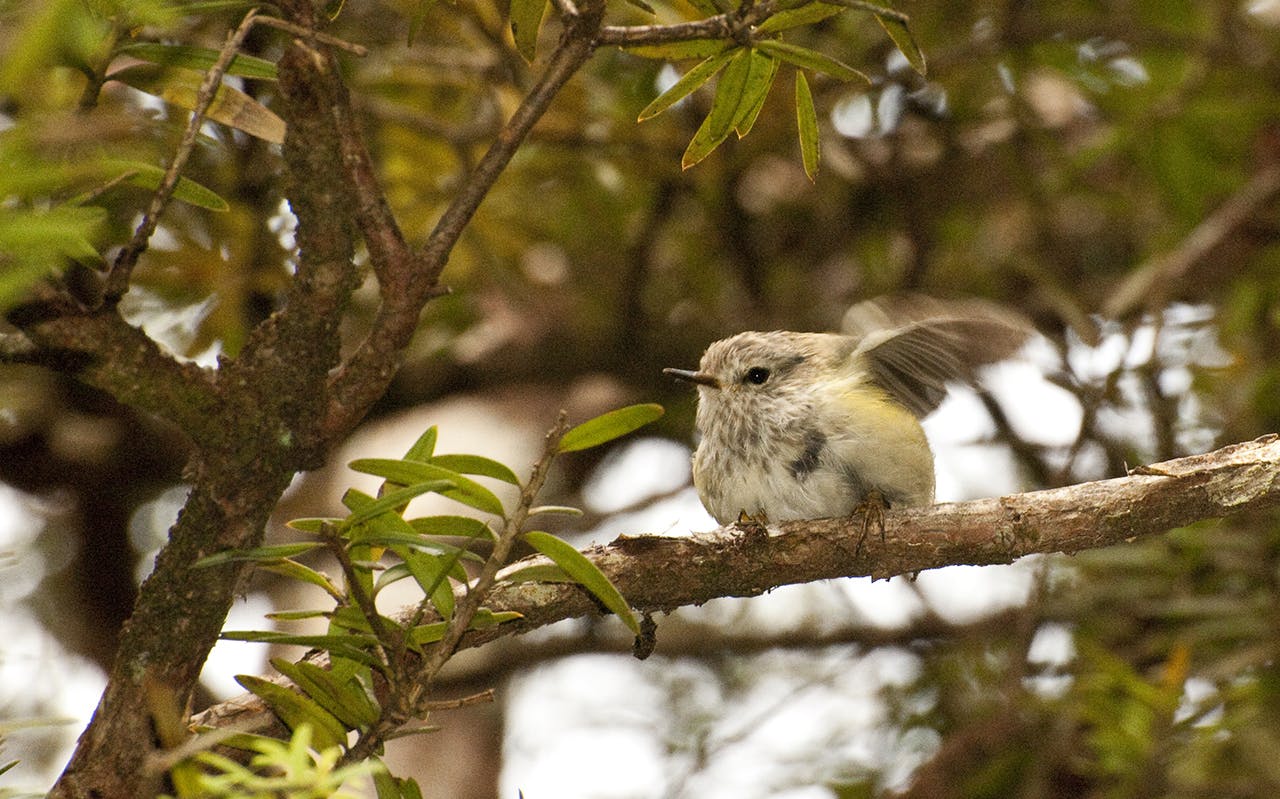Three places to see the hard-to-spot and tiny rifleman
New Zealand’s smallest bird flies in flocks, flitting through the trees in a relentless search for insects. Early European immigrants thought the green plumage of the male birds resembled a soldier’s coat, hence their name ‘rifleman’. Maori call them titipounamu, also a reference to the male’s vivid colour. In contrast, females have brown plumage.
Although once very common, the two subspecies that exist in the forests of both main islands now have only patchy distributions. The northern subspecies Acanthisitta chloris granti is found on Great and Little Barrier islands, with the southern subspecies Acanthisitta chloris chloris also living on D’Urville Island and Rakiura.
These diminutive almost tail-less birds number among four endemic wren species. As the strongest fliers, riflemen have fared the best of their kin, with two cousins – the bush wren and Stephens Island wren – now extinct. Rock wren, the fourth species, survive in alpine environments, but remain vulnerable to introduced predators.
The head-down, bum-up breed of tramper don’t usually see rifleman, for the birds are so tiny only the observant and patient will spot them. Females weigh on average seven grams, with the males just six. Further, their camouflaged plumage matches their forest habitat, rendering them even harder to see.
Ornithologists liken the rifleman’s repetitive chirp to a ‘zipt-zipt-zipt’ sound, which many people can’t hear, while others confuse it with that of small insectivorous birds such as silvereyes. When I conducted forest surveys for DOC in the 1990s, we recorded all bird species encountered. My colleague, Keith Broome, had the useful characteristic of being unable to hear high-pitched sounds, including the rifleman’s chirp. Keith could, however, detect the call of a silvereye, so by the process of elimination, if I could hear the birdcall, but Keith couldn’t, we knew the unseen bird was a rifleman.
Riflemen glean their prey – mainly moths, small weta, flies, beetles and caterpillars – from the moss-covered branches and tree trunk crevices. One naturalist called this sort of feeding ‘rifling’, while 19th century ornithologist Walter Buller went as far to say that the birds ‘moved with such celerity that it is rather difficult for the collector to obtain a shot.’ Sometimes rifleman form mixed flocks with other species; presumably the larger the number of birds, the greater chance of a good feeding frenzy when they do happen upon a large swarm of insects.
Mt Puroera Track, Puroera Forest Park
The Mt Pureora Track climbs through a full range of stratified forest, from large podocarp trees near the road to the stunted shrubs surrounding the summit. From the summit trig, fine views unfold over Lake Taupo, the Tongariro mountains and nearby Mt Titiraupenga. On a good day, a picnic near the summit might just be rewarded by an encounter with rifleman.
Parks Peak Hut, Ruahine Forest Park
The stunted mountain beech trees of Parks Peak provide a good opportunity to observe riflemen, with the branches at head-height. Two tracks lead to the comfortable DOC hut: one up Sentry Box Spur from Mangleton Road, and the other from the Makaroro Road end. Nearby Totara Spur, on the other side of the Makaroro River, provides good habitat for riflemen too.
Lewis Tops Track, Lewis Pass National Reserve
This short bush track provides one of the most accessible routes to the tops in the South Island. Starting from Lewis Pass summit itself, the track climbs steadily through stunted beech forest onto the delightfully rolling, tarn-strewn ridge. If you don’t encounter rifleman in the dwarf forest, at least you’ll have the reward of ambling on some o.f the country’s most pleasant tussock tops.








